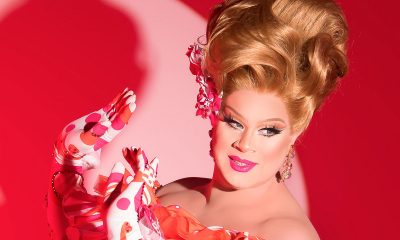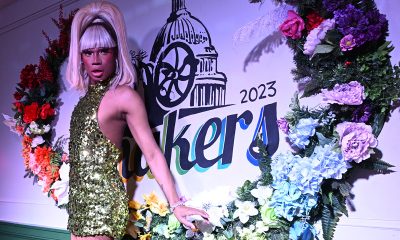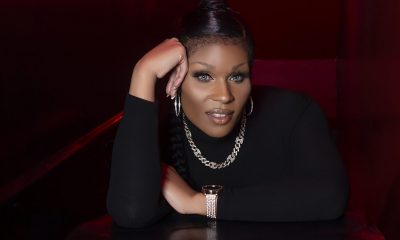a&e features
Mary Wilson shares Motown memories
Legendary Supremes singer in D.C. for Blues Alley engagement
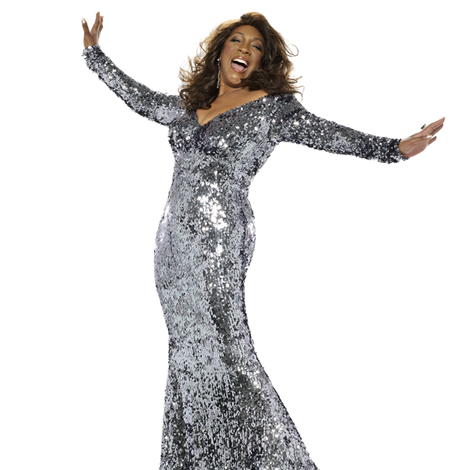
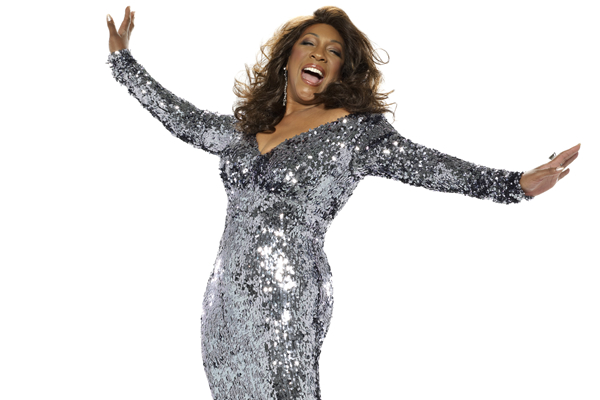
Mary Wilson says her Blues Alley engagement will feature standards, jazz and Motown hits. (Photo courtesy Blues Alley)
Now that we’re 50 years removed from the 1960s, there’s enormous interest in all things Motown.
Of course the label’s popularity never really went away but a flurry of recent events, from Broadway’s “Motown: the Musical” to exhibits of the Supremes’ legendary stage gowns to deluxe reissues of many of the label’s classic albums, point to a Motown fever burning as hot as ever.
Supremes founding member Mary Wilson — the only singer to stay in the group for its entire run — is in the midst of a four-night engagement at Washington’s Blues Alley. She spoke with the Blade by phone this week from her home in Las Vegas on a wide spate of topics from her recent dance hit, her stint on “RuPaul’s Drag Race,” her oft-misunderstood relationship with Diana Ross and more.
WASHINGTON BLADE: Tell us a little of what you have planned for your Blues Alley engagement, please.
MARY WILSON: It’s a combination. Last time I was there I believe I did my straight sort-of jazz show, so this time I will probably do some of the American songbook and some Supremes songs as well because I know a lot of people would like to hear that. So it will be a combination of all of that. I love doing ballads, you know, love songs. Also it’s Valentine’s week, so I have to honor that because I believe in love.
BLADE: Is it taxing to do two shows each night?
WILSON: I don’t normally do two shows so yeah, it really is. It’s a little harder now that I’m 72, almost 73. I’ll be 73 in March so it can be a little taxing because I’m used to doing one. But I love being on stage. I don’t have a problem performing it’s just, you know, the traveling and all that other stuff that makes it a little more difficult.
BLADE: On average, how much of the year do you spend on the road?
WILSON: I usually do about three to four gigs a month.
BLADE: It must have been gratifying to have a dance hit a little over a year ago when “Time to Move On” hit no. 23 on the Billboard dance chart.
WILSON: It was great. I mean, I didn’t even realize that was going to happen. We recorded that song years ago with a young man out of the Imagination group, Leee John. I think it was in 2002. Some beautiful people out in the San Francisco area, Sweet Feet Music, decided they wanted to release it. I was like, “Oh my God, OK.” So then we went in and did the video and they put it out and it charted. I was so surprised and elated that it charted. It was beautiful and wonderful.
BLADE: How did Sweet Feet even know about it?
WILSON: Well the Supremes fans are just everywhere. I don’t know. I think they knew Leee John. The Imagination may not have been as big here in the states, but they were big in the UK so they knew them.
BLADE: There was such a nice stash of Supremes album reissues and deluxe sets from Hip-O Select over several years but they seem to have suddenly stopped about two years ago. Do you know if any more are planned?
WILSON: I’m not sure. … I know Universal — I feel funny saying Universal instead of Motown — but I know they’re re-releasing our “Go-Go” album. I was just at Universal when I was in New York at the B.B. King club and I went and did some interviews there and they played me a lot of songs.
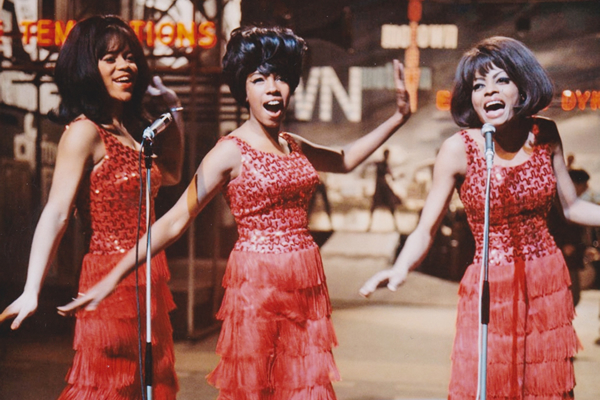
From left are Florence Ballard, Mary Wilson and Diana Ross. Wilson says tales of tension between the three original Supremes have been exaggerated over the years. (Photo courtesy Wilson)
BLADE: The bonus disc for the “I Hear a Symphony” expanded edition in 2012 had an entire 1966 Supremes concert recorded at the Roostertail in Detroit. Do you know how commonly Supremes concerts were recorded?
WILSON: I really don’t know. Things are showing up now that I didn’t even know had been recorded because this was before everyone had their cell phones and this and that.
BLADE: So you had the Supremes gowns in your possession all these years? It must have cost a fortune to store them all this time.
WILSON: This is true. Well yeah, I just had them in storage. I have a pretty large home here in Las Vegas so some I had in the basement but then it got to be too much so I had them in storage areas here. My daughter says I’m a hoarder but I say what I’m hoarding is worth a fortune. She never really understood it. … Some were in boxes. One of the famous ones I’m having restored. It was beaded on chiffon and just got so worn that the beads were falling off, so I’m having them repaired.
BLADE: Did you keep all the wigs too?
WILSON: Wigs not as much. They tend to get really old and then they’re no good. Pretty much everyone kept their own wigs throughout the years so I never really had a lot of those, but the gowns, yes. I do have everyone’s gowns except the ones that were stolen. … There was a lot of stuff stored at Motown where we originally stored them and when the building in Detroit was torn down, a lot of people just started taking stuff — pictures, masters, gowns. Some have landed elsewhere. There are a couple here in the Hard Rock Cafe casino in Vegas, so they’ve been all over the place. I don’t know how else they ended up here and there other than people just took them when the building was torn down. I even got a few of them back on eBay.
BLADE: There wasn’t as much Motown stuff in the National Museum of African-American History here in Washington as I would have thought. Were you ever in touch with its staff about having some Supremes items there?
WILSON: You know what, I’m a little disappointed because I offered them my gown exhibit to be displayed there and I never heard back from them. I made a presentation and everything. I guess they had so many things, so many artifacts, they couldn’t take everything so I understood, but I was disappointed. When I’m in D.C., I’m going to try and go see it. I’m very thrilled it’s there. I’m just not happy the Supremes gowns aren’t part of it.
BLADE: It seems insane to me that the Supremes never won a Grammy in the ‘60s. Was there some anti-Motown sentiment in the industry at the time or what?
WILSON: I really don’t know. It’s kind of hurtful when I hear of so many people having Grammys. We had 12 number one records but did not ever receive a Grammy. Three of our singles, much later, were inducted into the Grammy Hall of Fame, but that was all done after the fact. So yeah, I’m a little pissed on it.
BLADE: There are some Supremes B-sides like “Going Down for the Third Time” that sound to me like they could have been hits. Or some minor hits like “Some Things You Never Get Used To” seem like they should have charted higher. Are there any Supremes tracks you think could have been hits but weren’t released as singles or had the potential to chart higher than they did?
WILSON: I’ve never been one to know much about what’s a hit and what’s not a hit. I do think some of the songs were really quite good but for them to have been hits, I don’t really know. There were certainly a lot I really liked.
BLADE: So many elaborate sculptures and paintings have been done of the Supremes over the years. Which are your favorites?
WILSON: I receive so many beautiful pieces of art that people have done on us. One person who’s passed now, his name was Ted LeMaster did quite a few lovely paintings. I think I have four of them and they’re just absolutely gorgeous. I’m working on a coffee table book of the Supremes gowns so I should include some of those as well. There’s another guy and, oh gee, I may have to get you his name later because it’s not coming to me off the top of my head, but he does these Supremes dolls and they are just beautiful. There are lots of artists out there and they send things to me all the time. I have them all over my place here.
BLADE: How did you enjoy being a guest judge on “RuPaul’s Drag Race”?
WILSON: It was great. He was just wonderful. You know, gorgeous. He’s a big Diana Ross fan so it was almost like seeing Diane in a way because he kind of does her thing. He looks great and all that stuff and it was loads of fun. I met so many wonderful, or I should say gorgeous, so many gorgeous people.
BLADE: The Frontier shows, the last with Miss Ross, that became the “Farewell” album in 1970 — was that set list pretty much the Supremes show in 1969 or was some of the stuff you did there, like the “Aquarius” medley with all the audience sing-alongs, was that maybe just worked up for that engagement knowing so many celebrities would be present?
WILSON: No, that was pretty much our normal show we toured with that year. Everything we did there, we’d pretty much been touring with, yes.
BLADE: Do you keep in touch often with (former Supremes) Cindy Birdsong and/or (Ross replacement) Jean Terrell?
WILSON: Yes. Last year we had the gown exhibit at the Grammy museum and I invited all the ladies there for that. Jean Terrell came, Scherrie Payne was there and Susaye Greene. I keep up with Cindy but I don’t see her as often as I want since she’s in L.A. and I’m in Vegas but I spend a lot of time in L.A. so I see her when I’m there.
BLADE: Is she well?
WILSON: I don’t want to get too much into her personal things. She’s a little older and she’s had some health issues.
BLADE: Do you ever hear from (founding Supreme) Florence Ballard’s three daughters? (Ballard left the group in 1967 and died in 1976.)
WILSON: Yes, whenever I’m in Detroit, they always come out and we talk on the phone a lot actually. So yeah, I do keep up — well, I should say they keep up with me, let’s put it that way.
BLADE: Did you enjoy “Motown: the Musical”?
WILSON: I loved it. I thought it was wonderful. Obviously it was Berry Gordy’s perception of what was going on and everybody, you know, there’ve been all these books, everybody has their own way of looking at it, but it’s all true. It’s just different perceptions from different people. The musical is more Berry’s perspective so he’s obviously looking from the top down. We were looking from down to up, but it’s just the way different people perceived it. But I absolutely loved it. In fact just a week or so ago it opened in L.A. and I flew out there and attended the opening. I was also at the London opening and, of course, the New York opening was also great.
BLADE: It looked like there was a lot of warmth between you and Berry and Diana at the opening. Would you say feelings have mellowed over the years?
WILSON: There always was. Some things that are brought out further tend to be the more negative things. Things that were really great are not broadcast as much so people tend to think there was a lot more dislike there but that’s just not true. We were all very, very close. There were always things going on like maybe you didn’t like this … that didn’t mean that the love was not there. It always was. But we were all different, we all had our own opinions so a lot of times when you speak out, people say, “Oh my God, they’re having a fight, they hate each other,” and that’s just not true. It’s just different likes and dislikes.
BLADE: I’ve read a lot of the books — your books, Randy Taraborrelli’s books. It always seems like a handful of incidents get told and retold. When you think of all the hours you and Florence and Diana obviously spent together rehearsing, traveling and recording, there had to have been more peace than tension or you’d never have gotten anything done.
WILSON: Well that’s what I’m saying. Some of the things that were brought out and broadcast as if they were major, major things, it’s just not true. People think there’s some big feud between Diane and I and there really is not. It’s just that she’s gone her way and I’ve done my thing so no, we’re not close, but that’s just because over the last 50-some years, our lives have gone in several different directions. I love her as much as I love Flo. People tend to think I love Flo more because they view it as we worked together more on the choreography, on the harmony. We were always together. And now Florence is not here to protect herself, so I don’t talk about her a lot because of that. But I don’t love Flo anymore than I love Diane. I love them both as much as I love my own sister.
BLADE: Did you see Mary Wells much in her later years? Do you think she regretted leaving Motown so early?
WILSON: I saw Mary up to the very end of her life. I actually worked with her trying to do whatever we could in terms of her cancer bout. I don’t know — I never talked to her about that so I really don’t know.
BLADE: It’s staggering to me the amount of material the Supremes recorded in the ‘60s. You must have been in the studio constantly.
WILSON: Well, we were also on the road a lot, too. But yes, what happened sometimes is we would fly into Detroit, record a few songs and then fly right out. So yes, we did record a lot of songs.
BLADE: Now that so many have been released on these expanded editions, I’m sure there are some you have no memory of, right?
WILSON: Not just songs. Sometimes I see pictures that I can’t remember and yet there I am in the picture. It’s just because there were so, so many. There really were.
BLADE: So much has been made of (Motown session singers) the Andantes singing with Diana on Supremes studio material the last few years she was in the group. But you and Cindy obviously still had to learn the parts for TV and concerts. If that was seen as some sort of time-saving device, what was the rationale?
WILSON: There was a lot going on then. Diane was already starting to record songs for her departure, so a lot of times, it was for that reason. But then they’d decide to use some of the recordings on Supremes albums even though we hadn’t been there. That happened a lot. Other times we were out rehearsing with Jean Terrell for the new group, so it was almost like being in two groups there for a while. Cindy was also still fairly new in the group so there wasn’t a lot of cohesiveness those last couple years. And the producers, you know, it’s like this with a lot of my friends who are actors and actresses, a lot of times it’s the producers and writers who make these kinds of decisions and you’re not even in on the decision making in the group. And then of course, Motown was moving to L.A. so there was a lot of stuff going an and we were not really looked upon as a group anymore because obviously Diane was leaving and all. It had to do with a lot of that stuff.
BLADE: You and Florence always had such great harmony and obviously it was before the days of Auto-Tune and all the studio bells and whistles they have now. Did you have to learn to sing harmony or was it something you were able to do naturally?
WILSON: Well it wasn’t just me and Flo, it was me, Flo and Diane and we all sang harmony together a lot. That was really our style naturally. That’s what you did back in those days, you sang. You didn’t have anything else to rely on. We didn’t even need music. We did shows in the early years without music or maybe just with a guitarist, Marvin Tarplin. So no, it was very natural and we didn’t have any help in that department. Actually the Supremes were a very harmonic group in terms of our style, that’s what we did. I kind of hated later on when we lost that because it was something we’d been very good at. It’s hard to harmonize with just two people. Before when we had Diane and (early members) Betty (McGlown) and Barbara (Martin), with four people, you know, you could do great harmony. We kind of lost that style when we found the hits. They were great, of course, but we lost something we were good at.
BLADE: I feel like (Four Tops lead singer) Levi Stubbs is one of the unsung heroes of Motown in a way. He was so committed to the group and had no apparent interest in solo fame like David Ruffin or Diana Ross. Was that just his personality?
WILSON: Yeah, that was his personality and, you know, it was great for the group. But some things like who’s around you and how you feel about it, those are very individual things but that’s one thing about Levi — he was very dedicated to his group.
BLADE: Whenever I see the (1968 TV special) “TCB,” that elevated glass stage looks so precarious. I assume it was taped on a soundstage somewhere. Part of me is always thinking you or the Temptations are going to fall off the edge of it or it will topple over or something silly.
WILSON: There was no danger of that. It was this very huge, Plexiglass stage and there was no way of us falling off. It was as large as any stage, probably larger than most stages. I think it was taped at NBC Studios but I’m not totally sure.
BLADE: What would Florence think of all this endless interest in the Supremes all these years?
WILSON: I think she’d feel the same as I — amazed that it’s lasted this long and that people are still interested. I wish she were here to see that people are still in love with Flo, Diane and Mary. As Flo said, “Honey, we is terrific.” And it’s true. Everywhere I go, people ask me more about Flo than they do about me or Diane. I think she would be very, very happy to know that she is so well remembered. When I sing “I Am Changing” (from “Dreamgirls”) in the show, and of course I dedicate it to Flo, the audience almost always gives me a standing ovation just when I’m saying that. She would be elated. I wish fate had been different for her. She was not like me. I got a chance to fight back and show the world who I am. Everybody can’t be, you know, the star of the show but you can certainly be a star in the show and that’s the way I look at it.
a&e features
From Prohibition to Pride: Queering the District podcast reveals local LGBTQ history
The new podcast explores the hidden history and enduring impact of queer spaces in Washington, D.C.
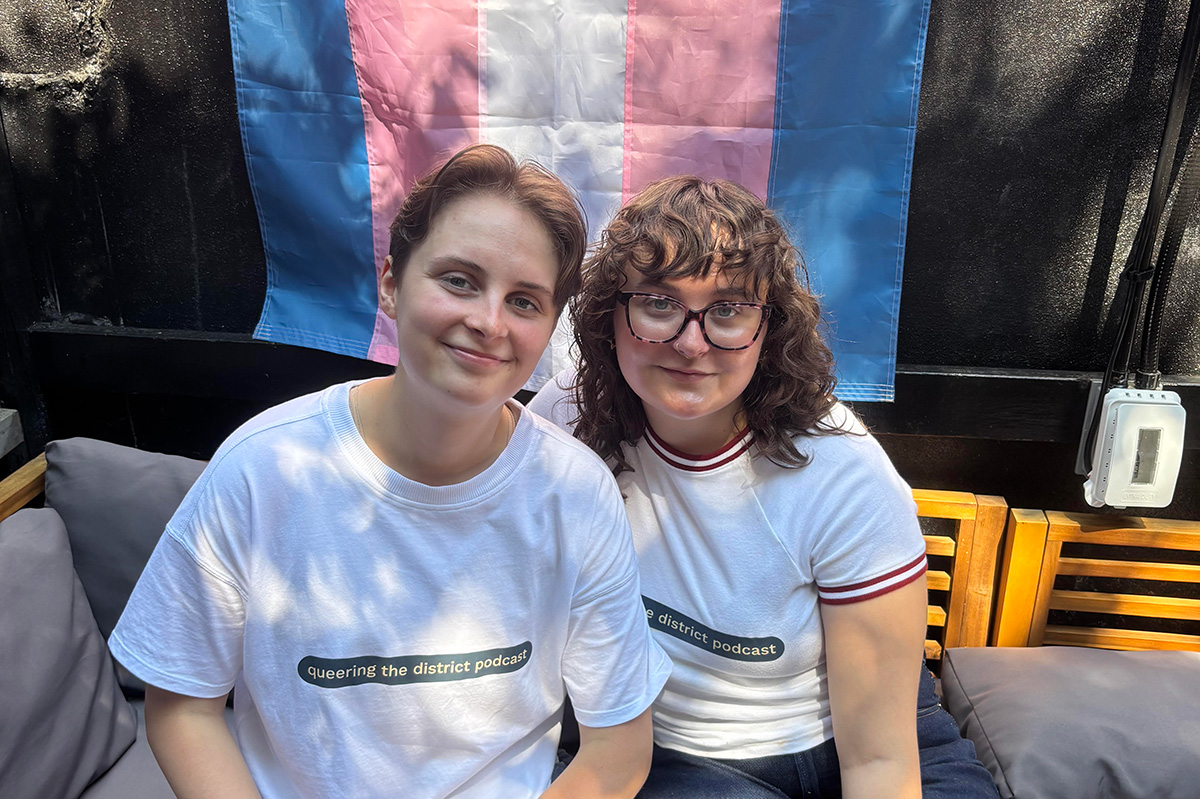
On June 25, as Pride month inched toward its end, three queer creators launched an ambitious project to honor the spaces that built D.C.’s LGBTQ community—and connect them to today’s queer life. The first episode of their podcast, Queering the District, hit streaming platforms that day, aiming to spotlight what host and co-creator Abby Stuckrath calls “third places”: bars, clubs, and gathering spots that have served as hubs for queer life across the city.
Each episode of the 10-part series delves into a different piece of D.C.’s queer past—from landmark clubs to untold personal stories—told through the voices of drag legends, activists, DJs, historians, and patrons who lived it. The show also threads together personal experiences from today’s community, bringing the listener on an auditory journey from Prohibition-era speakeasies to contemporary nights out at places like As You Are or Saints & Sinners.
Abby Stuckrath, alongside her sibling Ellie Stuckrath, and producer Mads Reagan, make up the podcast’s creative team. A recent journalism graduate of American University, Abby told the Blade that her passion for queer storytelling began during college—and that D.C. itself played a defining role in shaping her queer identity.
“I went to American University. I graduated last year and studied journalism. When I was in school, I always wanted to focus on queer stories – especially in D.C., because I’m from Denver, Colorado, I’ve never lived in a place like this before. D.C. has always just kind of been a place I call home when it comes to my queer identity.”
But breaking into the media to tell those stories wasn’t easy. Stuckrath quickly learned that editorial support—and funding—for queer-focused projects is limited. So she decided to do it her own way.
“I kind of found out that if you want to tell stories, you kind of have to do it on your own– especially when it comes to queer stories. There’s not a lot of people begging for us to talk about queer people and to pay you for it. So I was like, ‘Okay, let’s just do it on my own.’”
The idea for the podcast first took root in conversations with Ellie, Abby’s sibling and biggest supporter. Ellie had also moved to D.C. to find more space to explore and express their queer and gender identities. Together, the two began shaping a vision that would combine storytelling, sound design, and grassroots community input.
“I was like, ‘I don’t know what exactly I want to do yet, but I want it to be queer, and I want it to be about D.C., and it’s going to be called Queering the District, and we’re going to find out what that means.’ And Ellie is my biggest supporter, and my best friend. And they were like, ‘Hell yeah. Like, let’s do this.’ And so we decided to just do it together.”
The name stuck—and so did the mission. The team began researching queer D.C. history and found a city overflowing with stories that had rarely been documented, especially in mainstream archives.
“We started looking up the history of queer culture in D.C., and it kind of just clicked from there,” Stuckrath said. “I did not know anything about how rich our history is in the city until one Google search, and then I just kept learning more and more. I was kind of pissed because I studied gender studies in school in D.C. and didn’t learn shit about this.”
Season one focuses on the role of third places—non-work, non-home spaces where queer people could gather, exist fully, and build community.
“Third places have always been the epicenter of queer life… places outside of just your own personal home, because sometimes that isn’t a safe place. And of course, the work most commonly in the past and still today, isn’t a safe place for queer people to be full of themselves. So like, bars were the first place for queer people to really thrive and meet each other.”
To make the show participatory, Queering the District includes a twist: a voicemail line where anyone can call in and share a memory or question. The team calls the phone “Fifi”—a nod to the kind of retro guestbooks often used at weddings, but reimagined for queer nightlife and history.
“We wanted to find a way for people to share their stories with us anonymously… so even though we start in Prohibition, we wanted to connect it to now—like, those people who were singing jazz to each other in a white queer bar are connected to you singing karaoke on a Sunday night at your favorite gay bar. We’re all interconnected by this third place of queer bars in D.C.”
Those connections are emotional as well as historical. While building the series, one realization hit Stuckrath particularly hard: the immense loss of queer spaces in D.C., especially in neighborhoods that have since been heavily redeveloped.
“Every time I go to a Nats game, I think about, well, this just replaced five gay bars that used to be here. It used to be the home of Ziegfeld’s… Tracks, which was almost 2,000 square feet, with a volleyball court in the back, a fire pit, and iconic light show. I just didn’t know that we had that, and it made me sad for the queer elders that are in our city now who walk the streets and don’t see all those places they used to call home.”
That sense of loss—alongside the joy and resilience of queer community—is what the show aims to capture. As the podcast continues, Abby hopes it serves as both a celebration and an educational tool, especially for young LGBTQ people arriving in D.C. without realizing the queer foundations they’re walking on.
“D.C. is a unique city, and specifically young queer people who are hoping to move to the city—to know that you’ve got to know your history to be here. I hope this serves as an easier way for you to consume and learn about queer history, because queer history defines how we move in life.”
And for all the voices still left out, Abby is clear: this podcast is an open door, not a final word.
“This is a perfectly imperfect podcast. We should just be a starting point. We shouldn’t be the ending point.”
New episodes of Queering the District drop every Wednesday on all major platforms.
a&e features
Doug Spearman takes his chance
‘Noah’s Arc: The Movie’ debuted on Paramount+ last month
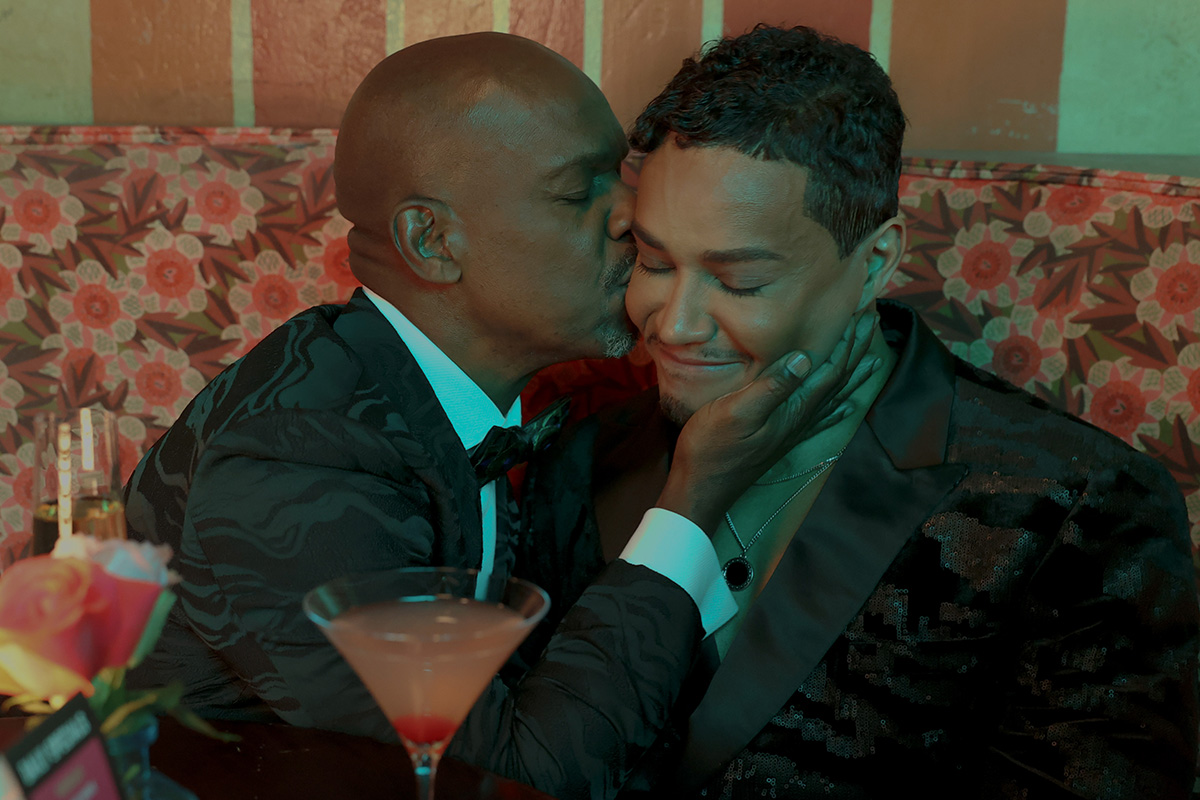
There’s no question that when Patrik-Ian Polk’s series “Noah’s Arc” premiered on Logo 20 years ago, it was a groundbreaking creation. The story of a group of Black gay men and their wonderful friendship. The titular arc was that of the cute main character, Noah (Darryl Stephens), and his close-knit circle of friends, including Chance played by gay actor Doug Spearman. This compelling and loving fraternity may, in fact, be what brought viewers back repeatedly, including a 2008 movie, “Noah’s Arc: Jumping the Broom,” as well as the 2020 “Noah’s Arc” short, and now, a new full-length feature “Noah’s Arc: The Movie,” debuting on Paramount+ on June 20. In the movie, filled with equal measures of laughs and tears, Chance, who has faced a devastating loss, finds his dependable friends there, ready to support and comfort him at a moment’s notice. I had the pleasure of speaking with Spearman the morning of the streaming premiere of “Noah’s Arc: The Movie.”
WASHINGTON BLADE: Doug, since the early 2000s, when the “Noah’s Arc” series premiered on Logo, you have been playing the character of Chance, including in the latest installment, “Noah’s Arc: The Movie.” What was it about Chance that appealed to you as an actor?
SPEARMAN: When Patrik (-Ian Polk) called me to ask me to play him (Chance), I was at JFK airport in the baggage claim, waiting for a suitcase. He explained what the part was. The thing that stuck out to me was the fact that Chance was in a long-term relationship with another Black man. And, they had a child; they had a 4-year-old daughter named Kenya. I had never seen two Black gay men raise a child on TV before. I thought it was the most revolutionary thing I’d ever seen. I immediately thought I’ve got to do this because that was something nobody had seen. I thought it was incredibly important to take the part.
BLADE: “Noah’s Arc: The Movie” was, once again, written and directed by Patrik-Ian Polk, who you just mentioned, is the creator of the entire franchise. What’s the secret to your long-standing working relationship?
SPEARMAN: [Laughs] the whole team, all of us, are like a band of brothers. We fight like brothers, we come together like brothers, we hash things out, we talk, because we’re all very different from our characters. I think the challenge of playing these guys and then uplifting these men, playing a part, especially something written by Patrik, is like solving a math equation. There’s always a challenge that’s enjoyable for me as an actor: to try to find out what it is that Patrik wants, and then how do I do it.
BLADE: I think you do a very good job of it.
SPEARMAN: Thank you very much
BLADE: In the years between “Jumping the Broom” and the new full-length movie, many changes have occurred, and the story addresses some of them, including gay widowhood, which is something that the aging community is now confronting, as well as mental health issues. Please say a few words about how you approached those subjects in the new movie.
SPEARMAN: I had a lot of loss in my life, right before we started shooting. Two months before we started shooting the first series, my mother died. I was going through the grief process through that whole first season. Since then, I’ve lost a lot of people in my life. In fact, when we started shooting the second season, the second week we were shooting, my ex died of a heart attack. I was having to fold that into what I was doing with my life on the set and off the set. You’ve got to show up and you’ve got to do your work. The first two seasons of “Noah’s Arc” are always tinged with the memory of grief. So, when I had to deal with the death that Chance faces (in the new movie), which is a significant death in his life, it wasn’t that hard to reach back, especially the scene in the graveyard. It was something that I unfortunately could pull from personal experience.
BLADE: Shifting gears, the movie features delightful cast surprises, including Jasmine Guy and TS Madison. Did you have a chance to interact with either or both when they were on set?
SPEARMAN: No, I didn’t have any scenes with Jasmine, and I missed her. I wish I had gotten to see her because I actually got to direct Jasmine for a CBS promo shoot for “Queen,” back in the early ‘90s. I had a huge crush on her when she was on “A Different World.” So, I really would have liked to reconnect. But TS and I got to see each other every day because I was in all her scenes. It was extraordinary being around somebody like that. That is one outspoken woman!
BLADE: Even though Beyoncé never makes an appearance in the movie, there’s a lot of talk about her. Would you say you are a Beyoncé fan?
SPEARMAN: Yes! I’m breathing! Yes, I’m a Beyoncé fan. I actually got the chance to meet her. I knew her mom. Her mom was extraordinary to me. She is in the second movie I directed. She also gave us a wedding gown to use in the very first scene of the movie. That family is extraordinarily important to me. Not only just to be a fan, but to be somebody who’s gotten to know them and work with them and see how hard they work. I don’t think anybody works as hard as Tina or Beyoncé.
BLADE: There was a recent news item about gay actor Benito Skinner of the Amazon Prime series “Overcompensating” being told not to bother auditioning for straight roles. As an out actor yourself, how important do you think it is for queer characters to be portrayed by queer actors, and vice versa?
SPEARMAN: Being queer is a multifaceted identity. There’s no one kind of queer person. I think finding the best actor that’s your first circle of casting. I think one of the joys about being an actor is that you get to play different parts. I play straight guys all the time. Dads and husbands and things like that. I think a lot of people are told not to do it. In fact, I wouldn’t be Chance if the actor who was originally cast as Chance hadn’t been pulled out of the series by his agents because they didn’t want him to play a gay character.
BLADE: That’s amazing! Thank you for sharing that. Without giving away too much, the ending of the movie is a little ambiguous, even ending with a question mark. If there was a “Noah’s Arc: The Movie” sequel, would you come back for that?
SPEARMAN: Yeah! A lot of it would depend on what Chance’s journey is going to be like. Patrik and I have conversations like that all the time. He’s very interested and supportive of input. I hope I would be, as we all would be, part of the creative growth with these characters. They live in Patrik’s head, and he writes them, but we’re the ones who have to flesh them out. It’s a conversation, it’s always a conversation.
BLADE: You are currently performing in Molière’s “The Imaginary Invalid” as part of the New Orleans Shakespeare Festival at Tulane. What has this experience been like for you?
SPEARMAN: It’s extraordinary! I started on stage when I was seven. There’s nothing like working with a live audience and having that immediacy. I’m working with an extraordinarily talented cast in a really great play, and I have some of the best scene partners I could ever want.
BLADE: Are there any upcoming film or TV projects you’d like to mention?
SPEARMAN: I’m still a writer, and I’m still a director, and I’ve still got scripts that I would like to make. I have a little something that’s a cross between “Treme” and “Bridgerton” that I want to do. I’m always trying to figure out what the next thing is.
a&e features
Visit Cambridge, a ‘beautiful secret’ on Maryland’s Eastern Shore
New organization promotes town’s welcoming vibe, LGBTQ inclusion
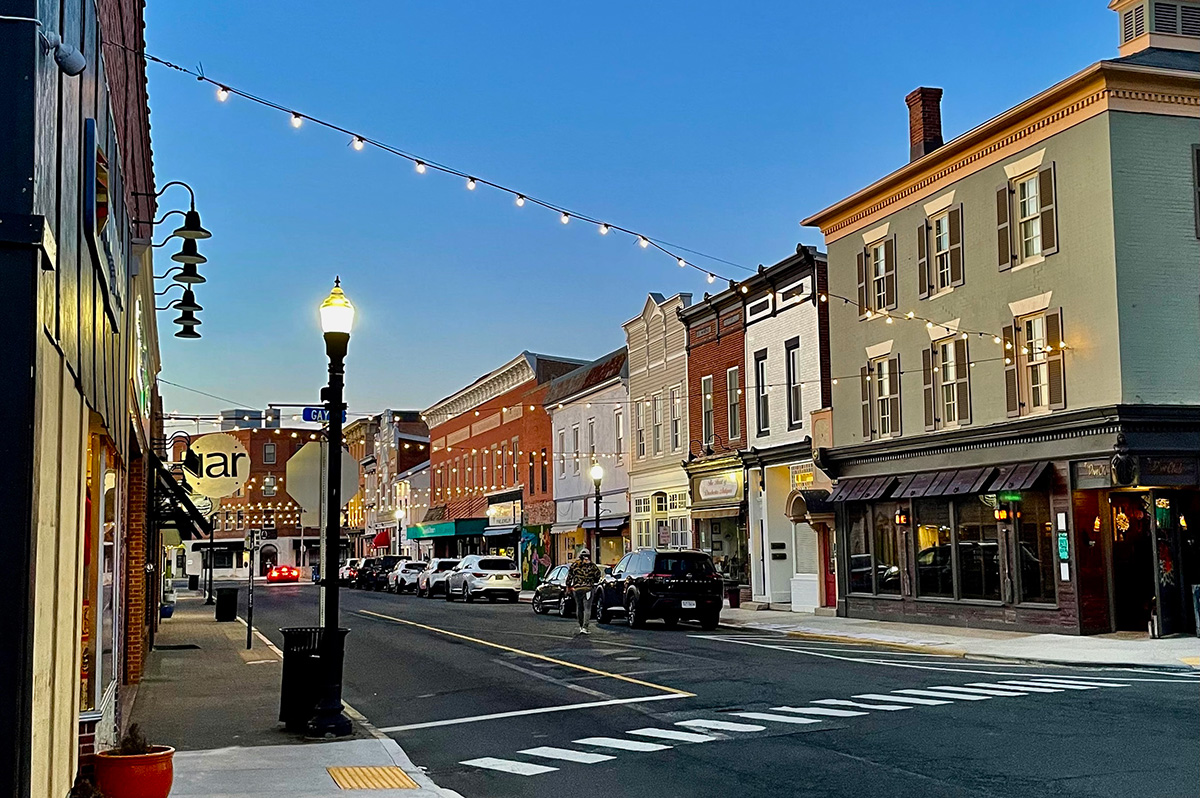
CAMBRIDGE, Md. — Driving through this scenic, historic town on Maryland’s Eastern Shore, you’ll be charmed by streets lined with unique shops, restaurants, and beautifully restored Victorian homes. You’ll also be struck by the number of LGBTQ Pride flags flying throughout the town.
The flags are a reassuring signal that everyone is welcome here, despite the town’s location in ruby red Dorchester County, which voted for Donald Trump over Kamala Harris by a lopsided margin. But don’t let that deter you from visiting. A new organization, Proudly Cambridge, is holding its debut Pride event this weekend, touting the town’s welcoming, inclusive culture.
“We stumbled on a beautiful secret and we wanted to help get the word out,” said James Lumalcuri of the effort to create Proudly Cambridge.
The organization celebrates diversity, enhances public spaces, and seeks to uplift all that Cambridge has to share, according to its mission statement, under the tagline “You Belong Here.”
The group has so far held informal movie nights and a picnic and garden party; the launch party is June 28 at the Cambridge Yacht Club, which will feature a Pride celebration and tea dance. The event’s 75 tickets sold out quickly and proceeds benefit DoCo Pride.
“Tickets went faster than we imagined and we’re bummed we can’t welcome everyone who wanted to come,” Lumalcuri said, adding that organizers plan to make “Cheers on the Choptank” an annual event with added capacity next year.
One of the group’s first projects was to distribute free Pride flags to anyone who requested one and the result is a visually striking display of a large number of flags flying all over town. Up next: Proudly Cambridge plans to roll out a program offering affirming businesses rainbow crab stickers to show their inclusiveness and LGBTQ support. The group also wants to engage with potential visitors and homebuyers.
“We want to spread the word outside of Cambridge — in D.C. and Baltimore — who don’t know about Cambridge,” Lumalcuri said. “We want them to come and know we are a safe haven. You can exist here and feel comfortable and supported by neighbors in a way that we didn’t anticipate when we moved here.”
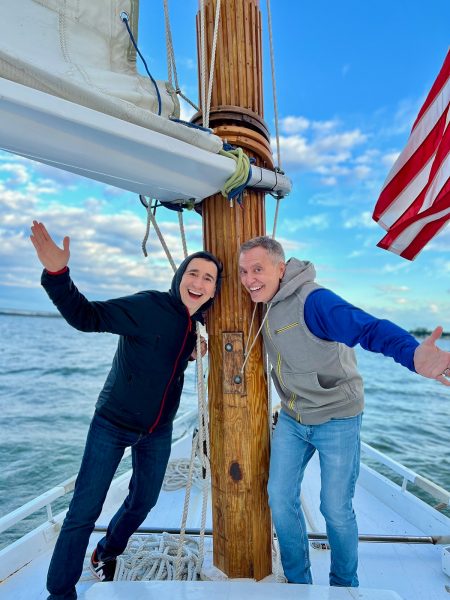
Lumalcuri, 53, a federal government employee, and his husband, Lou Cardenas, 62, a Realtor, purchased a Victorian house in Cambridge in 2021 and embarked on an extensive renovation. The couple also owns a home in Adams Morgan in D.C.
“We saw the opportunity here and wanted to share it with others,” Cardenas said. “There’s lots of housing inventory in the $300-400,000 range … we’re not here to gentrify people out of town because a lot of these homes are just empty and need to be fixed up and we’re happy to be a part of that.”
Lumalcuri was talking with friends one Sunday last year at the gazebo (affectionately known as the “gayzebo” by locals) at the Yacht Club and the idea for Proudly Cambridge was born. The founding board members are Lumalcuri, Corey van Vlymen, Brian Orjuela, Lauren Mross, and Caleb Holland. The group is currently working toward forming a 501(c)3.
“We need visibility and support for those who need it,” Mross said. “We started making lists of what we wanted to do and the five of us ran with it. We started meeting weekly and solidified what we wanted to do.”
Mross, 50, a brand strategist and web designer, moved to Cambridge from Atlanta with her wife three years ago. They knew they wanted to be near the water and farther north and began researching their options when they discovered Cambridge.
“I had not heard of Cambridge but the location seemed perfect,” she said. “I pointed on a map and said this is where we’re going to move.”
The couple packed up, bought a camper trailer and parked it in different campsites but kept coming back to Cambridge.
“I didn’t know how right it was until we moved here,” she said. “It’s the most welcoming place … there’s an energy vortex here – how did so many cool, progressive people end up in one place?”
Corey van Vlymen and his husband live in D.C. and were looking for a second home. They considered Lost River, W.Va., but decided they preferred to be on the water.
“We looked at a map on both sides of the bay and came to Cambridge on a Saturday and bought a house that day,” said van Vlymen, 39, a senior scientist at Booz Allen Hamilton. They’ve owned in Cambridge for two years.
They were drawn to Cambridge due to its location on the water, the affordable housing inventory, and its proximity to D.C.; it’s about an hour and 20 minutes away.
Now, through the work of Proudly Cambridge, they hope to highlight the town’s many attributes to residents and visitors alike.
“Something we all agree on is there’s a perception problem for Cambridge and a lack of awareness,” van Vlymen said. “If you tell someone you’re going to Cambridge, chances are they think, ‘England or Massachusetts?’”
He cited the affordability and the opportunity to save older, historic homes as a big draw for buyers.
“It’s all about celebrating all the things that make Cambridge great,” Mross added. “Our monthly social events are joyful and celebratory.” A recent game night drew about 70 people.
She noted that the goal is not to gentrify the town and push longtime residents out, but to uplift all the people who are already there while welcoming new visitors and future residents.
They also noted that Proudly Cambridge does not seek to supplant existing Pride-focused organizations. Dorchester County Pride organizes countywide Pride events and Delmarva Pride was held in nearby Easton two weeks ago.
“We celebrate all diversity but are gay powered and gay led,” Mross noted.
To learn more about Proudly Cambridge, visit the group on Facebook and Instagram.
What to see and do
Cambridge, located 13 miles up the Choptank River from the Chesapeake Bay, has a population of roughly 15,000. It was settled in 1684 and named for the English university town in 1686. It is home to the Harriet Tubman Museum, mural, and monument. Its proximity to the Blackwater National Wildlife Refuge makes it a popular stop for birders, drawn to more than 27,000 acres of marshland dubbed “the Everglades of the north.”
The refuge is walkable, bikeable, and driveable, making it an accessible attraction for all. There are kayaking and biking tours through Blackwater Adventures (blackwateradventuresmd.com).
Back in town, take a stroll along the water and through historic downtown and admire the architecture. Take in the striking Harriet Tubman mural (424 Race St.). Shop in the many local boutiques, and don’t miss the gay-owned Shorelife Home and Gifts (421 Race St.), filled with stylish coastal décor items.
Stop for breakfast or lunch at Black Water Bakery (429 Race St.), which offers a full compliment of coffee drinks along with a build-your-own mimosa bar and a full menu of creative cocktails.
The Cambridge Yacht Club (1 Mill St.) is always bustling but you need to be a member to get in. Snapper’s on the water is temporarily closed for renovations. RaR Brewing (rarbrewing.com) is popular for craft beers served in an 80-year-old former pool hall and bowling alley. The menu offers burgers, wings, and other bar fare.
For dinner or wine, don’t miss the fantastic Vintage 414 (414 Race St.), which offers lunch, dinner, wine tasting events, specialty foods, and a large selection of wines. The homemade cheddar crackers, inventive flatbreads, and creative desserts (citrus olive oil cake, carrot cake trifle) were a hit on a recent visit.
Also nearby is Ava’s (305 High St.), a regional chain offering outstanding Italian dishes, pizzas, and more.
For something off the beaten path, visit Emily’s Produce (22143 Church Creek Rd.) for its nursery, produce, and prepared meals.
“Ten minutes into the sticks there’s a place called Emily’s Produce, where you can pay $5 and walk through a field and pick sunflowers, blueberries, you can feed the goats … and they have great food,” van Vlymen said.
As for accommodations, there’s the Hyatt Regency Chesapeake Bay (100 Heron Blvd. at Route 50), a resort complex with golf course, spa, and marina. Otherwise, check out Airbnb and VRBO for short-term rentals closer to downtown.
Its proximity to D.C. and Baltimore makes Cambridge an ideal weekend getaway. The large LGBTQ population is welcoming and they are happy to talk up their town and show you around.
“There’s a closeness among the neighbors that I wasn’t feeling in D.C.,” Lumalcuri said. “We look after each other.”
-
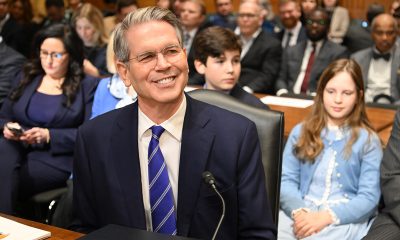
 Federal Government1 day ago
Federal Government1 day agoTreasury Department has a gay secretary but LGBTQ staff are under siege
-
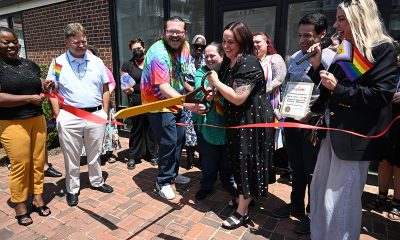
 Virginia2 days ago
Virginia2 days agoDefying trends, new LGBTQ center opens in rural Winchester, Va.
-
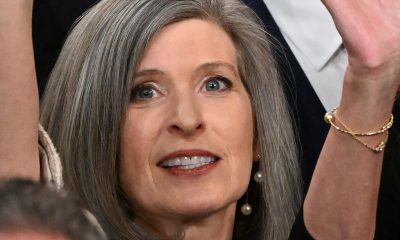
 District of Columbia1 day ago
District of Columbia1 day agoGay GOP group hosts Ernst, 3 House members — all of whom oppose Equality Act
-
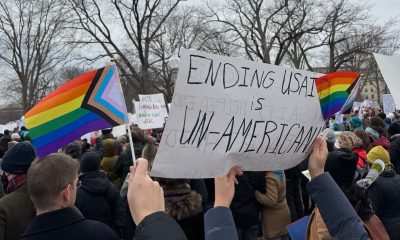
 Opinions3 days ago
Opinions3 days agoUSAID’s demise: America’s global betrayal of trust with LGBTQ people

